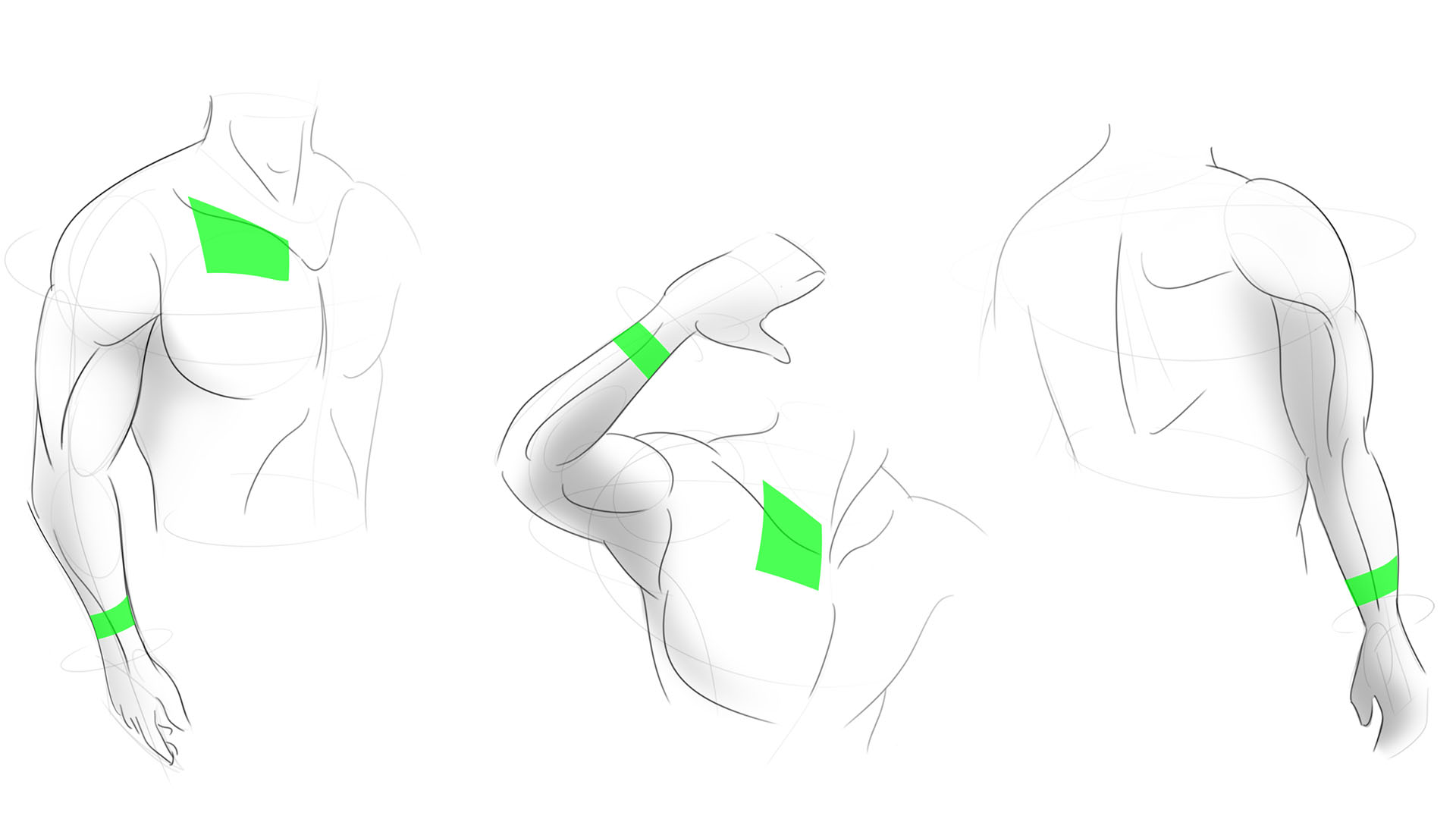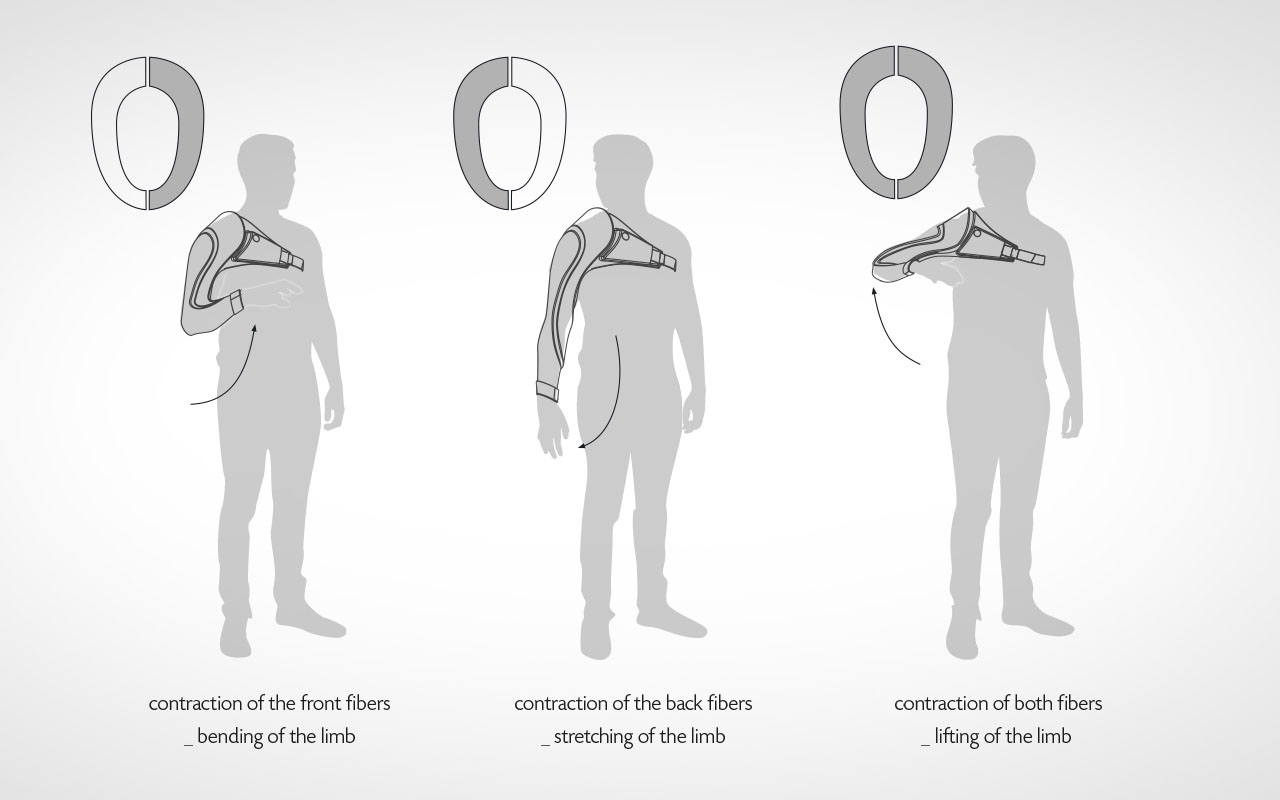TASK _ TO USE ARTIFICIAL CNT MUSCLES IN AN ORTHOSIS THAT SUPPORTS PATIENTS WITH PARALYSIS IN THEIR HEALING PROCESS.
︎︎︎
WHY ?
MEDICAL EQUIPMENT IS MORE THAN JUST TECH

Strokes or neuromuscular diseases can weaken human limbs to the point of complete paralysis. This condition represents a life-changing burden for the affected patient. As long as there is residual limb function, rehabilitation is the standard approach. This process is highly individual and unfortunately does not always lead to success. reCover is intended to provide the patient with an aid that enables rapid and self-determined rehabilitation.
Our research and discussions with patients and providers also revealed that, in addition to this purely functional level, special requirements must be placed on the design. The stigmatization of a medical condition should be prevented, which means that an orthosis should be visually discreet and be combinable with different types of clothing in everyday life.
Our research and discussions with patients and providers also revealed that, in addition to this purely functional level, special requirements must be placed on the design. The stigmatization of a medical condition should be prevented, which means that an orthosis should be visually discreet and be combinable with different types of clothing in everyday life.








HOW ?
LEARNING FROM ANATOMICAL PRINCIPLES OF ACTION







After elaboration and initial design steps, we settled on a simple product architecture: the shoulder orthosis contains a closed functional strand of artificial CNT muscles and pressure sensors, which encloses the arm and shoulder in a form-fitting manner after activation. Electrical impulses cause the textile to contract more or less strongly depending on the intensity.
Like the interaction principle of the human musculature, complex movement patterns can be generated by contracting different component zones.
_product placement _muscle direction _fixed attachment _power supply _flexible attachment









The basic concept idea is to allow the patient to use the damaged limbs in everyday life again as soon as possible. In this way, permanent training takes place and improvements can occur more quickly. reCover recognizes the patient's movement intentions and actively supports the patient's movement pattern.
To maintain the patient's training effect permanently and to avoid dependency, this support only works proportionally and is therefore dependent on the wearer's cooperation. In addition to the direction of movement, the orthosis also detects the patient's force and thus immediately adjusts the external force transmission.
To maintain the patient's training effect permanently and to avoid dependency, this support only works proportionally and is therefore dependent on the wearer's cooperation. In addition to the direction of movement, the orthosis also detects the patient's force and thus immediately adjusts the external force transmission.



TASK _ TO USE ARTIFICIAL CNT MUSCLES IN AN ORTHOSIS THAT SUPPORTS
PATIENTS WITH PARALYSIS IN THEIR HEALING PROCESS.
︎︎︎
WHY ?
MEDICAL EQUIPMENT IS MORE THAN JUST TECH

Strokes or neuromuscular diseases can weaken human limbs to the point of complete paralysis. This condition represents a life-changing burden for the affected patient. As long as there is residual limb function, rehabilitation is the standard approach. This process is highly individual and unfortunately does not always lead to success. reCover is intended to provide the patient with an aid that enables rapid and self-determined rehabilitation.
Our research and discussions with patients and providers also revealed that, in addition to this purely functional level, special requirements must be placed on the design. The stigmatization of a medical condition should be prevented, which means that an orthosis should be visually discreet and be combinable with different types of clothing in everyday life.
Our research and discussions with patients and providers also revealed that, in addition to this purely functional level, special requirements must be placed on the design. The stigmatization of a medical condition should be prevented, which means that an orthosis should be visually discreet and be combinable with different types of clothing in everyday life.








HOW ?
LEARNING FROM ANATOMICAL PRINCIPLES OF ACTION







After elaboration and initial design steps, we settled on a simple product architecture: the shoulder orthosis contains a closed functional strand of artificial CNT muscles and pressure sensors, which encloses the arm and shoulder in a form-fitting manner after activation. Electrical impulses cause the textile to contract more or less strongly depending on the intensity. Like the interaction principle of the human musculature, complex movement patterns can be generated by contracting different component zones.
_product placement _muscle direction _fixed attachment _power supply _flexible attachment









The basic concept idea is to allow the patient to use the damaged limbs in everyday life again as soon as possible. In this way, permanent training takes place and improvements can occur more quickly. reCover recognizes the patient's movement intentions and actively supports the patient's movement pattern.
To maintain the patient's training effect permanently and to avoid dependency, this support only works proportionally and is therefore dependent on the wearer's cooperation. In addition to the direction of movement, the orthosis also detects the patient's force and thus immediately adjusts the external force transmission.
To maintain the patient's training effect permanently and to avoid dependency, this support only works proportionally and is therefore dependent on the wearer's cooperation. In addition to the direction of movement, the orthosis also detects the patient's force and thus immediately adjusts the external force transmission.



FINAL RESULT




Project Titel _ RECOVER | +1 Team member / Min Zhang
Supervised by Prof. Wolfgang Schabbach | Coburg University of Applied Sciences
Highly commended by the Mia Seger Foundation 2021
Big thanks to the interview partners Gordon Siewert, Christoph Haas, Daniel Härtel, and Alexander Wolf.
Special thanks to Elisabeth Klug and Marius Greiner for ideation support.
Supervised by Prof. Wolfgang Schabbach | Coburg University of Applied Sciences
Highly commended by the Mia Seger Foundation 2021
Big thanks to the interview partners Gordon Siewert, Christoph Haas, Daniel Härtel, and Alexander Wolf.
Special thanks to Elisabeth Klug and Marius Greiner for ideation support.
Project Titel _ RECOVER | + 1Team member / Min Zhang | Supervised by Prof. Wolfgang Schabbach |
Coburg University of Applied Sciences
| Highly commended by the Mia Seger Foundation 2021
Big thanks to the interview partners Gordon Siewert, Christoph Haas, Daniel Härtel, and Alexander Wolf. | Special thanks to Elisabeth Klug and Marius Greiner for ideation support.
Big thanks to the interview partners Gordon Siewert, Christoph Haas, Daniel Härtel, and Alexander Wolf. | Special thanks to Elisabeth Klug and Marius Greiner for ideation support.